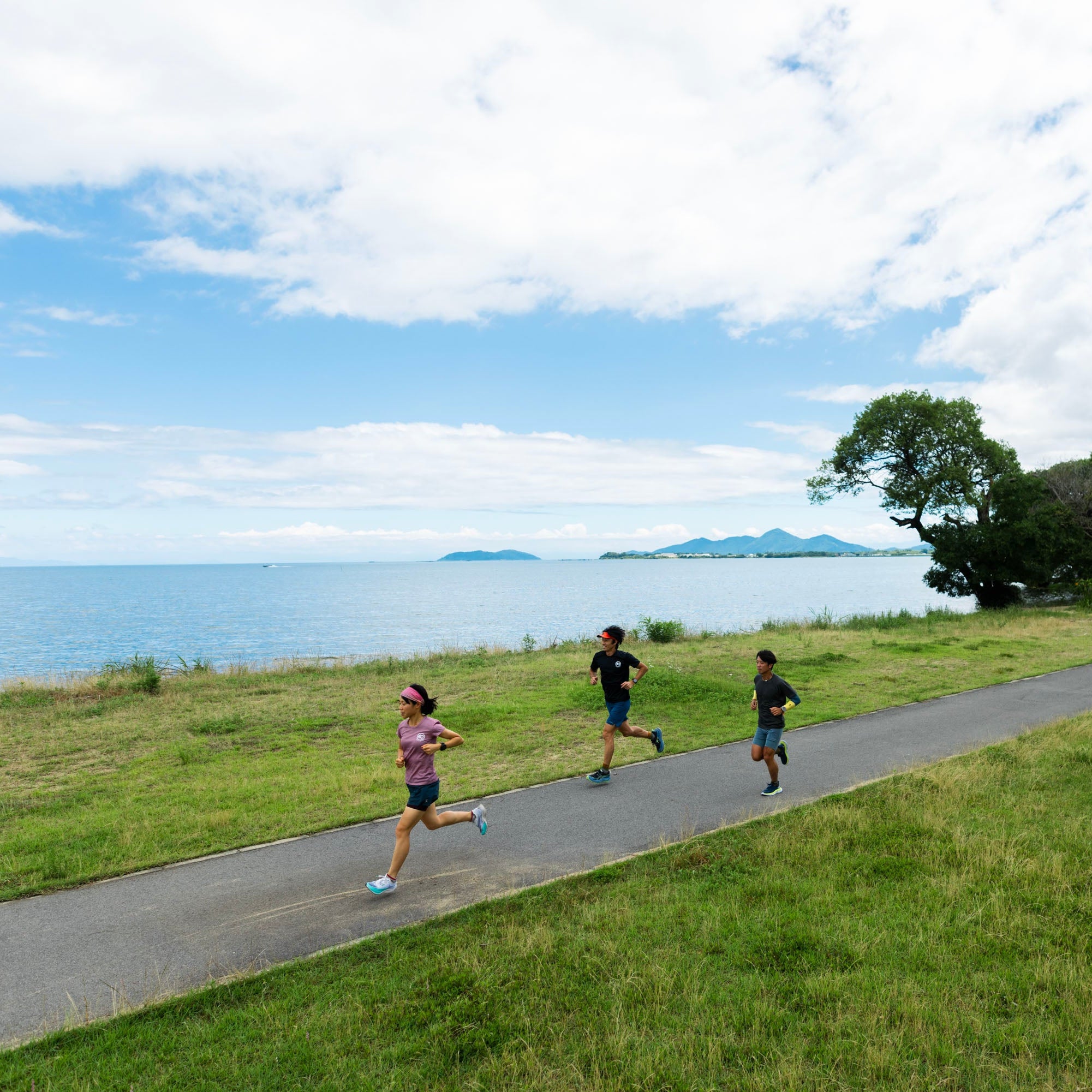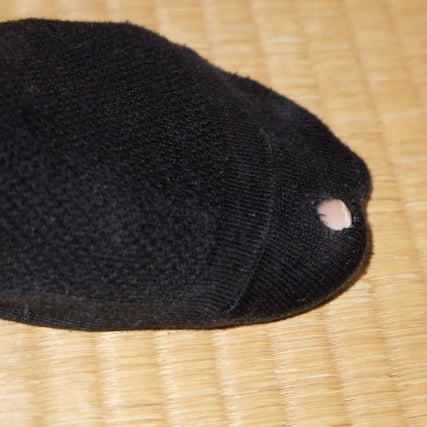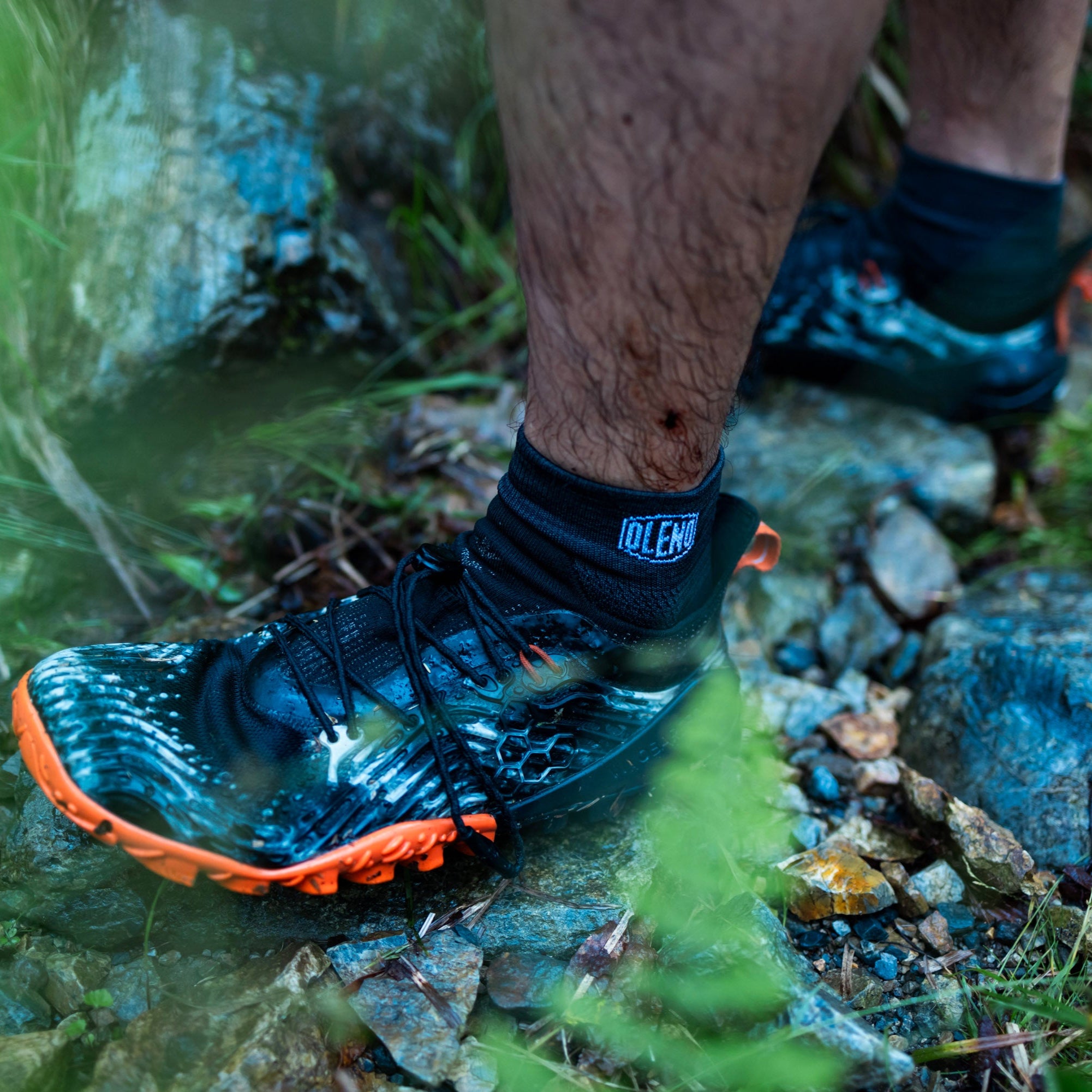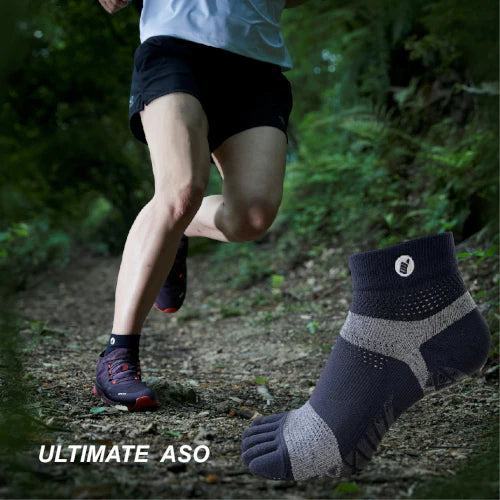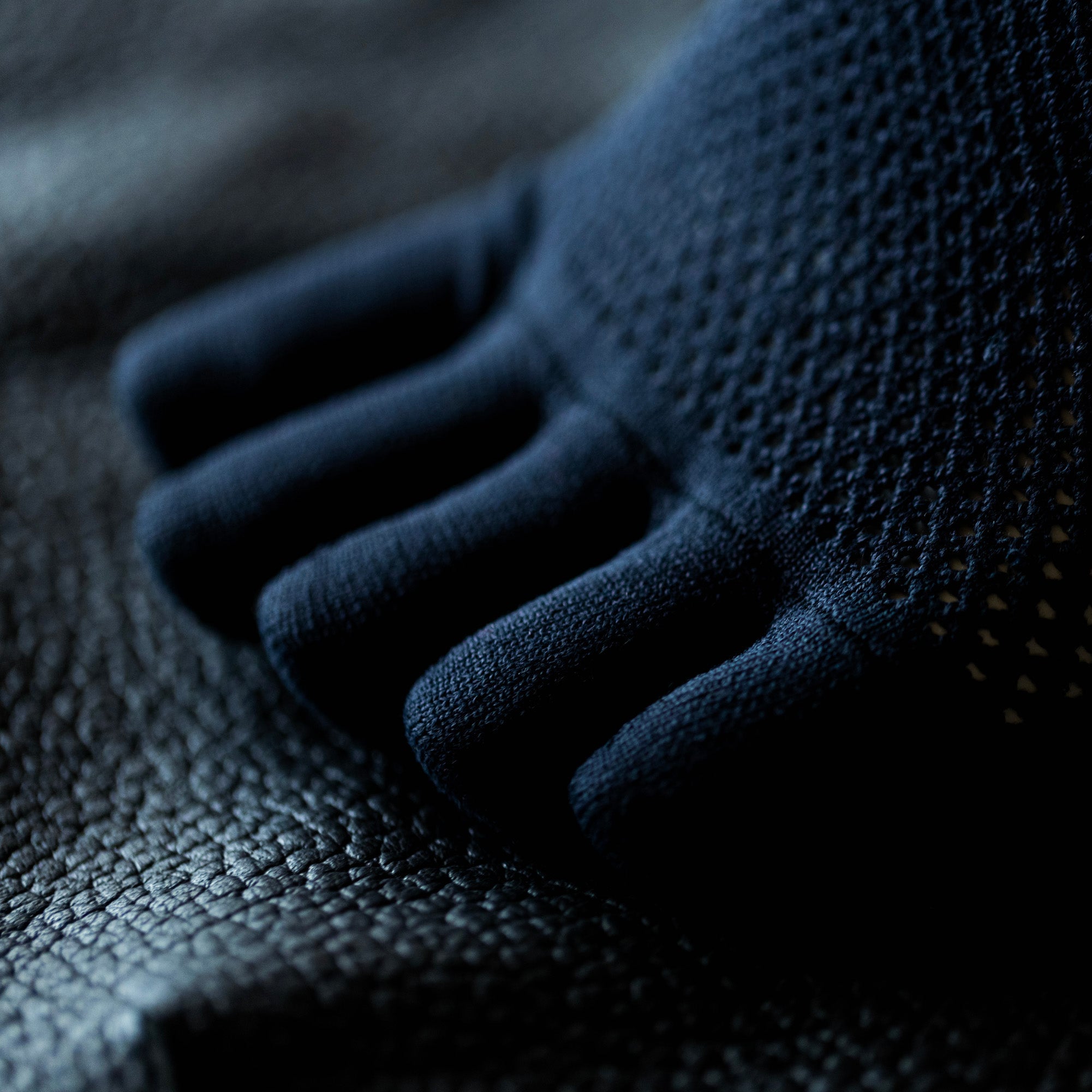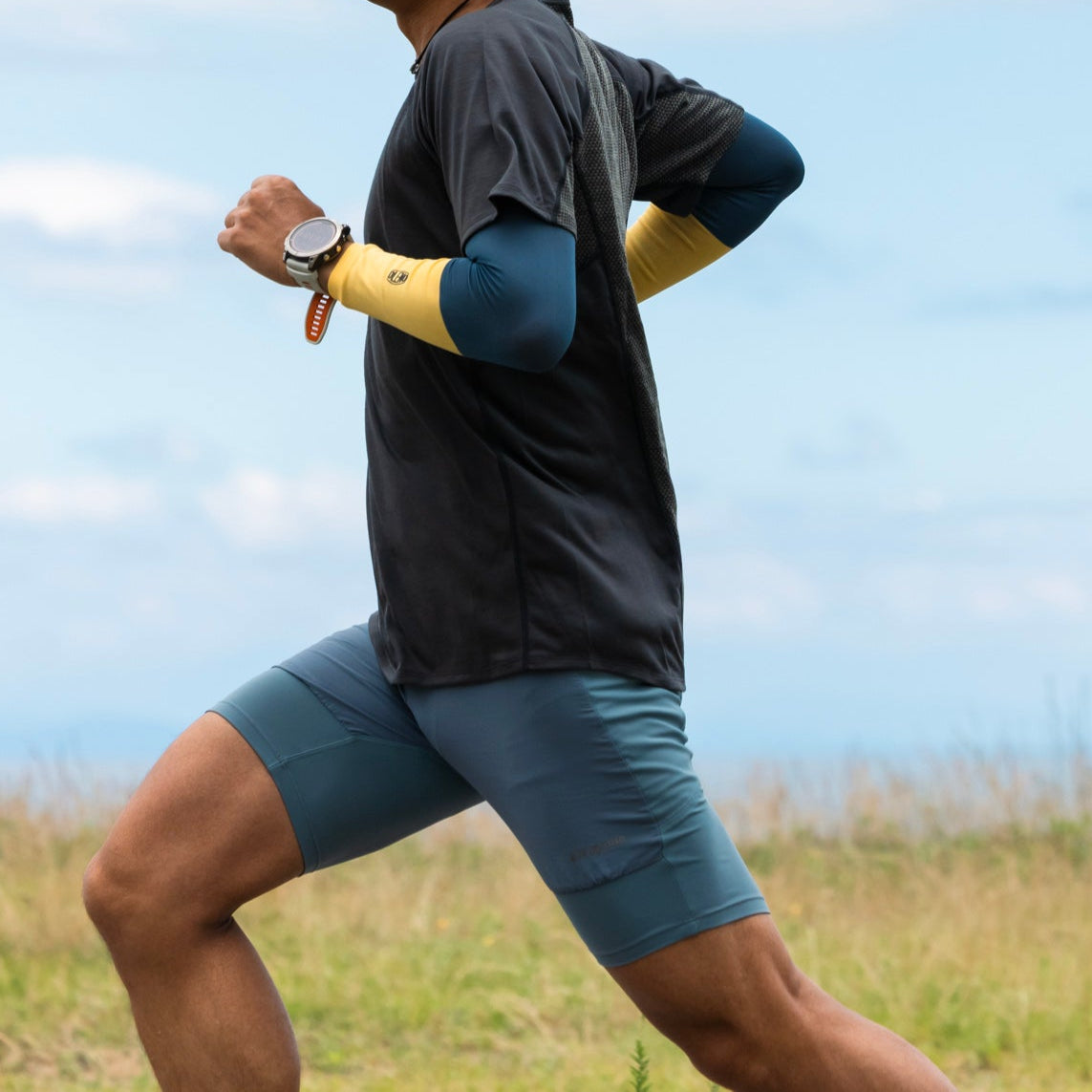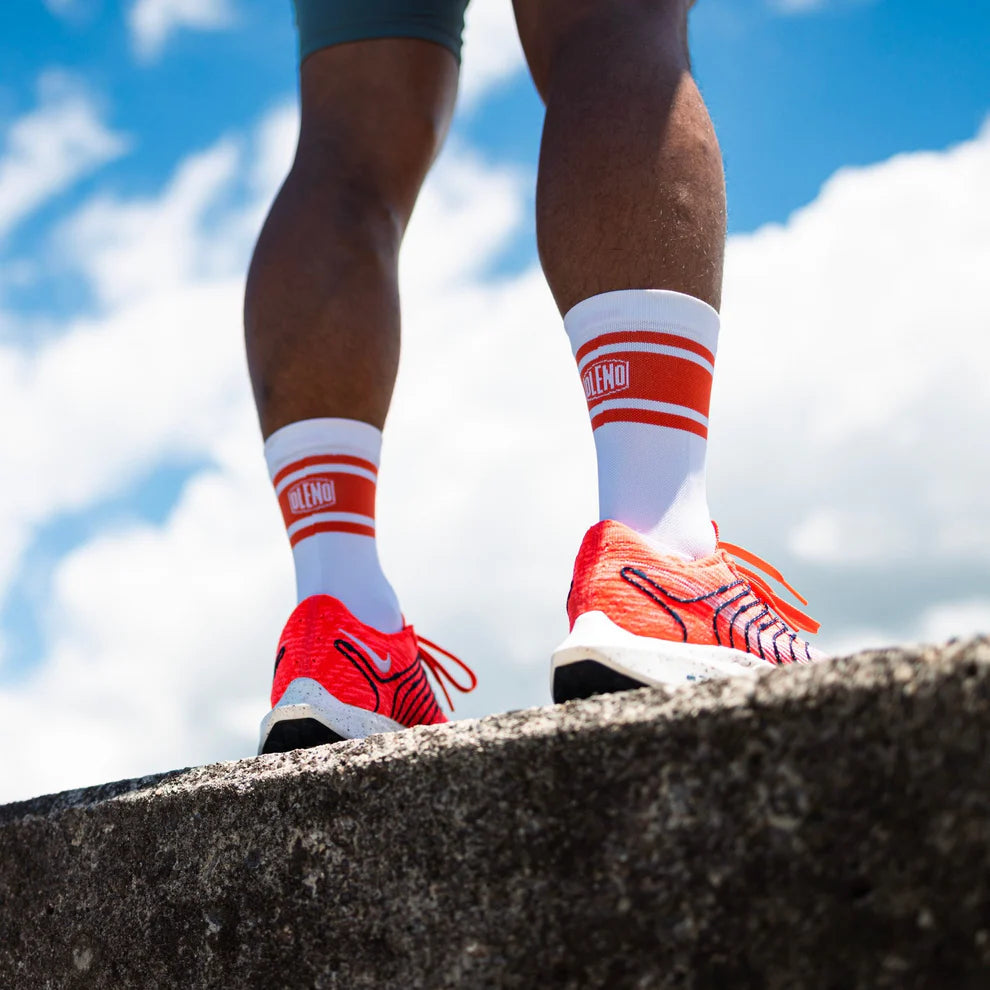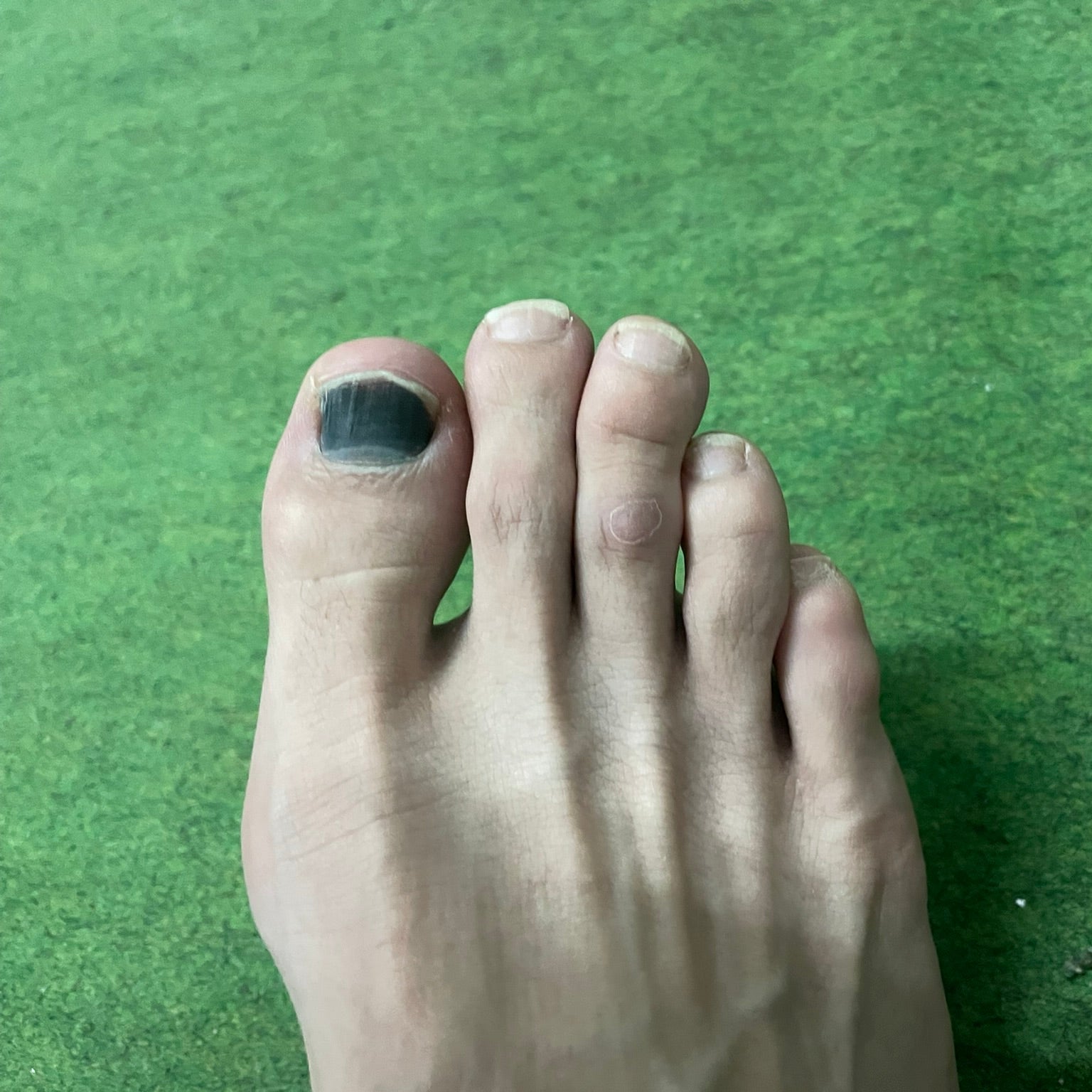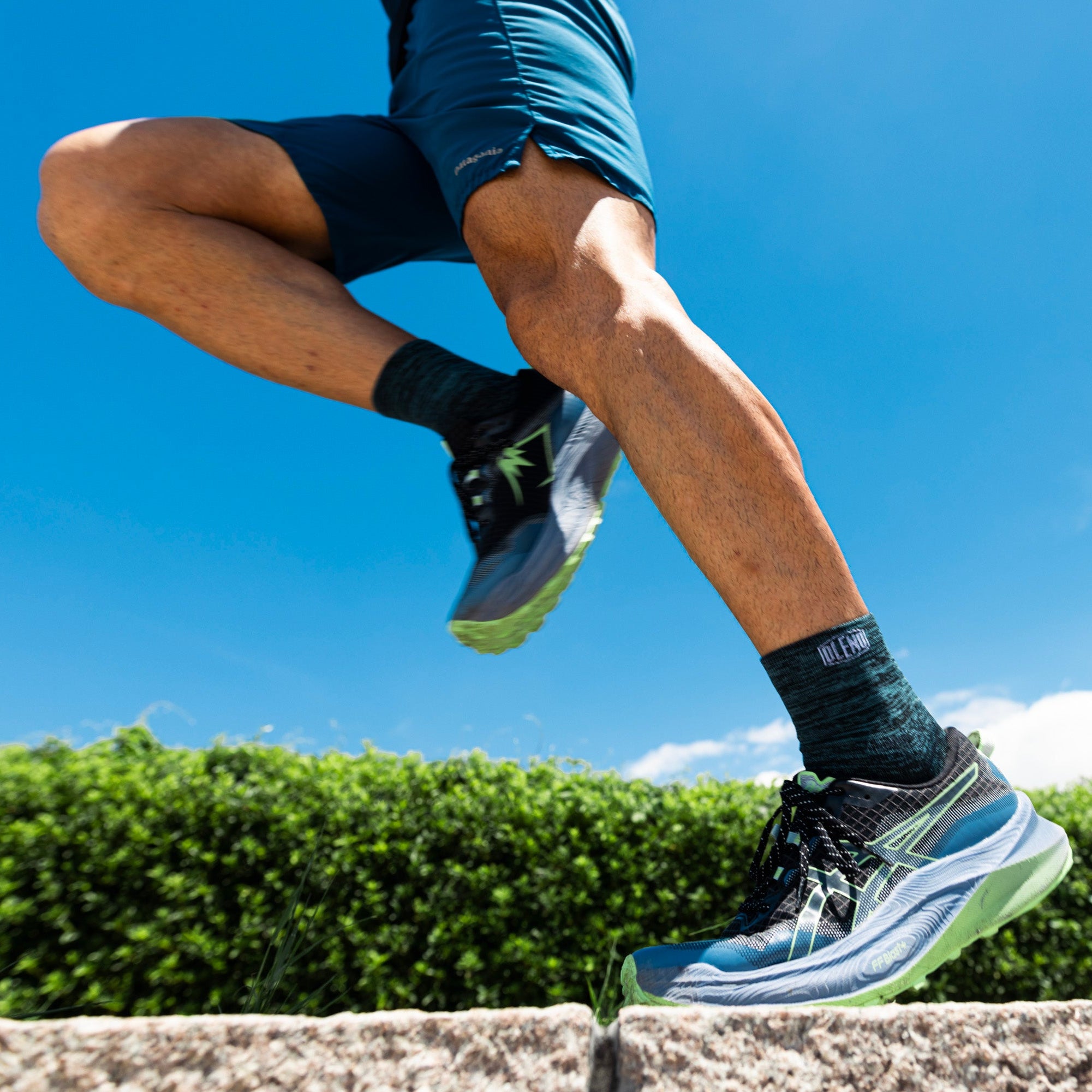【table of contents】
1. Common foot problems among runners and trainees
2. Why arch stability affects performance
3. The effect of arch support socks
4. The developers struggled with the right amount of support
5. The benefits of using socks instead of insoles
1. Common foot problems among runners and trainees
If you continue long-distance running or hard training, fatigue will inevitably accumulate in the soles of your feet and calves.
・The soles of my feet hurt when I run more than 30km.
・Calf muscles are swollen
- Easy to get blisters and blisters
・Your form is ruined and you feel discomfort in your knees and hips.
These symptoms are caused by a collapse of the arch of the foot .
A functioning arch absorbs the impact of landing and efficiently transfers energy to the next step.
However, when the arches fall, the impact is transmitted directly to the bones and muscles , leading to fatigue and injury.

2. Why arch stability affects performance
The arch is the suspension of the foot, responsible for absorbing , storing , and returning energy.

This is a technical matter, but
Immediately after landing, the foot touches the ground at three points (the foot tripod): the ball of the big toe, the ball of the little toe, and the heel , and the arch sinks slightly to absorb the impact .
In the intermediate phase, the plantar fascia and surrounding muscles store tension like a spring , and when the big toe arches upward during the push-off (windlass mechanism), that tension is reused, increasing propulsion efficiency . This is the chain of "receive → store → return."
If the arch is low, this chain is disrupted. The body sinks deeper, causing excessive internal rotation of the tibia and inward collapse of the knee with each impact, which then spreads to the hip joint.

As a result
・The ground contact time is slightly increased, and the pitch tends to become unstable
・The kicking force is lost, and the propulsion is not as strong as it is at the end of the run.
・Extra work is done around the calves and knees, causing fatigue
This leads to the phenomenon.
Differences in actual driving scenarios
Imagine the second half of a 10km run. A runner with a stable arch can easily relax the pressure on the ball of their foot, which means they can take a longer stride with the same breathing rate and their form is less likely to be disrupted.
On the other hand, if the arch is collapsed, the sole of the foot will stick to the ground, causing the push-off to move diagonally backward, shortening the stride. This will result in a difference in the last 3km.
Self-check guidelines
Example: Standing on tiptoe on one leg → Can you stay still on the big toe side?
For example, is the landing sound quiet when jumping repeatedly? (If there is a thud, you are sinking too much.)
If these collapse, the arch may not be functioning properly.
3. The benefits of arch support socks
Arch support socks are not simply socks that apply pressure. They are gear that "guides" the movement of your feet with a knitted design.
① Acts as a movement “guide”

By wrapping the arch with a diagonal tension band (wrap), the sinking of the foot when landing is minimized. The important thing here is not to "stop" it, but to guide it to a position that makes it easier to return to. Excessive fixation can interfere with the arch of the big toe (windlass), but appropriate tension regulates the rhythm of sinking and returning, connecting power to the push-off.
② A bridge between shoes and insoles

Socks are the layer closest to your feet. They act as a medium to directly transmit the rebound of the midsole and insole to your feet, making the most of the shoe's original design.
People with collapsed arches who make their feet stick to the ground tend to have unnecessary dispersion of rebound, but support socks keep the contact point compact, reducing the loss of rebound.
3. Improve the microenvironment of the skin, humidity, and friction
Blisters and calluses that occur during long runs are caused by concentrated friction due to moisture and slippage.

The moisture-absorbing and quick-drying knit and cushioned pile sole absorb the friction of the skin surface over a wide area, reducing the peak of slippage.
When the soles of your feet are protected, the "force sensors (proprioception)" necessary for maintaining your form are less likely to be disrupted.
④ Supports circulatory rhythm
The light compression from the arch to the inner ankle area helps pump venous return to the feet, reducing swelling during long runs. The more swelling is reduced, the better the fit will feel towards the end of the run.

Important: Arch support socks are not a substitute for strength and form training. However, by guiding you to the correct course from landing to pushing off with every step, they help you maintain form that doesn't tire you out - and that's their true effect.
4. The developers struggled to determine the right amount of support
As someone who makes socks for athletes, we at OLENO faced the biggest challenge in developing arch support socks: how much support to provide .
If the support is too strong, it will not be compatible with the shoe and will restrict the freedom of movement of the foot.
VS
If the support is too weak, you won't feel any effect and it will just be "just a pair of socks."
To find this balance, we asked athletes at the forefront of their sport, including Olympic track and field athletes, Japanese trail running representatives, and professional league athletes, to try on the shoes.
The answer cannot be found in just one or two test runs. We had participants wear the shoes throughout the season, and we sought out the "optimal amount of support" that met three conditions: "does not interfere with the race," "does not interfere with shoes or insoles," and "can prevent injuries in the long term."
For the developers, the most difficult part was making the delicate adjustment of "not too much, not too little."
However, it is thanks to this trial and error that OLENO's arch support socks exist today.
5. The benefits of using socks instead of insoles
Many people choose insoles as a way to support their arches, but there are some advantages to using socks for support.
"No need to choose shoes": Same effect with running shoes and everyday shoes
"No compromise on fit" : Adds natural support without changing the shoe size
"Hygienic to use" : Washable, so sweat and bacteria do not easily accumulate
"Direct sensation" : The socks come into direct contact with your feet, so you can feel the support "immediately after putting them on."
While insoles are a great option, socks are far more practical in terms of being "easy to use and you can use multiple pairs" for daily practice and games.
Especially for runners, the merit of not having to change them every time you change shoes is huge.
6. Summary: The small stability of the soles of your feet supports your running
In the end, running and training are all about taking one step at a time.
If the arch that supports that step is collapsed, no matter how much you practice, your progress will plateau.
Arch support socks help to stabilize this small area of the sole of your foot.
You will be able to appreciate its value even more when you learn about the development that went into finding just the right support, neither too strong nor too weak.
Not just to make today's practice easier, but to prevent future injuries.
Arch support socks will be a great help in helping you enjoy sports for a long time.


